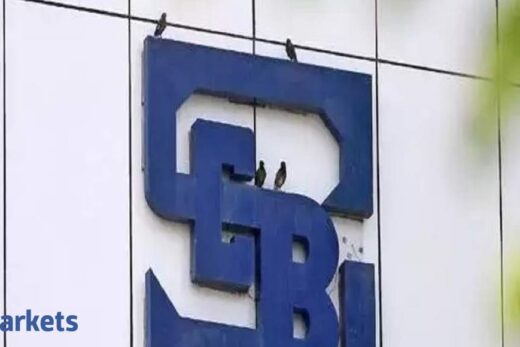One ratio that can help you is the claim settlement ratio; this ratio gives you an idea as to how reliable the health insurance company can be in case you need to make a claim. The Insurance Regulatory and Development Authority of India (Irdai) has released the claims settlement details of general and health insurance companies for the financial year 2019-20.
Among the private general insurance companies, HDFC Ergo General Insurance tops the chart with 99.8% claims settled in first 3 months of making the claim. This is closely followed by Edelweiss General and Go Digit with 99.72% and 99.65%, respectively, within the first 3-month period. However, going by the incurred claim ratio, Edelweiss General Insurance, a relatively new company, has topped the chart with 113.05% during the financial year 2019-20. (The incurred claims ratio indicates the percentage amount of premium paid towards claims. Read on to find out why this ratio is important.)
Only six private insurers have an incurred claims settlement ratio between 75% and 90% (an ideal range recommended by experts) for the financial year 2019-20. The lowest ratio of 21.08 was registered by Acko General Insurance. The other three insurers that have registered ratio below 50% are Navi General Insurance (erstwhile DHFL General Insurance) 34.69%, Cholamandalam MS General Insurance 40.67% and Kotak Mahindra General Insurance 49.22%.
| Private Sector General Insurers | ||||
| % Claim settled in | Incurred Claim Ratio | |||
| Insurer | Less than 3 months | 3 months to 6 months | 2018-19 | 2019-20 |
| HDFC Ergo | 99.8 | 0.12 | 62.29 | 69.01 |
| Edelweiss General | 99.72 | 0.24 | 115.35 | 113.05 |
| Go Digit | 99.65 | 0.24 | 10.76 | 51.83 |
| Navi General* | 98.7 | 1.13 | 46.07 | 34.69 |
| Kotak Mahindra | 98.62 | 0.83 | 47.20 | 49.22 |
| Bajaj Allianz | 98.61 | 0.97 | 85.29 | 81.96 |
| Reliance | 98.16 | 0.68 | 93.55 | 89.36 |
| Liberty | 97.84 | 1.31 | 81.64 | 87.78 |
| SBI General | 97.84 | 1.34 | 52.03 | 50.54 |
| Royal Sundaram | 97.75 | 1.04 | 60.52 | 63.55 |
| ICICI Lombard | 96.93 | 1.79 | 76.45 | 69.90 |
| Magma HDI | 95.4 | 1.84 | 90.46 | 72.87 |
| Acko General | 93.49 | 5.57 | 23.69 | 21.08 |
| Future Generali | 93.34 | 2.57 | 73.31 | 62.52 |
| Tata AIG | 92.82 | 5.3 | 77.89 | 66.61 |
| Bharti AXA | 92.17 | 5.21 | 88.55 | 77.50 |
| Cholamandalam MS | 91.47 | 4.47 | 35.30 | 40.67 |
| Shriram General | 87.53 | 4.74 | 52.51 | 96.64 |
| IFFCO Tokio | 81.67 | 12.8 | 101.92 | 95.66 |
| Raheja QBE | 30.29 | 7.21 | 32.87 | 85.07 |
| Universal Sompo | 22.14 | 26.43 | 92.19 | 76.68 |
| Private Total | 75.85 | 72.55 | ||
Public sector general insurance companies have much lower claim settlement ratio (within the first three-months) compared to private insurers. Oriental Insurance is at top with 92.71% and New India Insurance with 91.99% claim settlement. However, all public sector insurers have reported incurred claim ratio above 100% for 2019-20, showing their liberal policy towards paying claims.
| Public Sector General Insurers | ||||
| % Claim settled in | Incurred Claim Ratio | |||
| Insurer | Less than 3 months | 3 months to 6 months | 2018-19 | 2019-20 |
| Oriental | 92.71 | 4.34 | 108.80 | 104.97 |
| New India | 91.99 | 4.45 | 103.74 | 100.83 |
| United India | 89.18 | 8.87 | 110.51 | 104.24 |
| National | 45.37 | 12.39 | 107.64 | 103.30 |
| Public Total | 107.12 | 102.91 | ||
When it comes to stand alone health insurance companies the competition is really tough as 6 out of 7 companies have claim settlement ratio above 99% during the three-month period. The only outlier is Reliance Health with 97%. However, when it comes to incurred claim ratio only HDFC Ergo (Erstwhile Apollo Munich Health Insurance) has registered a number above 70% with 73.69%.
| Standalone Health Insurers | ||||
| % Claim settled in | Incurred Claim Ratio | |||
| Insurer | Less than 3 months | 3 months to 6 months | 2018-19 | 2019-20 |
| Religare Health | 100 | – | 55.23 | 59.13 |
| HDFC Ergo Health** | 99.99 | 0.01 | 62.59 | 73.69 |
| Manipal Cigna@ | 99.96 | 0.03 | 61.94 | 61.64 |
| Max Bupa | 99.91 | 0.08 | 53.93 | 53.51 |
| Star Health | 99.9 | 0.06 | 62.73 | 65.91 |
| Aditya Birla Health | 99.36 | 0.54 | 58.61 | 49.08 |
| Reliance Health# | 97.13 | 2.87 | 13.57 | 62.17 |
| Standalone Health Total | 60.68 | 64.13 | ||
*Erstwhile DHFL General Insurance Co. Ltd., ** Erstwhile Apollo Munich Health Insurance Ltd., @ Erstwhile CignaTTK Health Insurance Co. Ltd., # With effect from November 15, 2019, the business portfolio of Reliance Health Insurance Ltd. was transferred to Reliance General Insurance Co. Ltd vide IRDAI Order dated November 06, 2019.
Source: IRDA Annual Report 2019-20
So, if you are buying a new policy or porting your existing health insurance policy to a new insurer make sure you check the latest claim settlement ratio of all the insurers before you take a final call.
How claim settlement ratio helps
“It is a term which reveals how much claims have been paid by the insurer in a given year. This ratio is one of the important parameters to look at before buying the policy. With this ratio, policyholders can gauge how much claims are paid by the insurer and how much of it gets rejected,” says Rakesh Goyal, Director Probus Insurance.
This ratio tells you that out of 100 claims that the insurance company receives how many have been paid by the insurer. If the claim settlement ratio is 90%, it means that insurer made payments against 90 claims out of 100 claims and did not pay for the remaining 10 claims during the specified period.
A good insurance company should not only honour all eligible claims but it should also process these in the swiftest possible manner. So higher the ratio, better it is for the policyholders. For health insurance companies this ratio is published for different period of times such as less than 3 months, 3 months to 6 months etc. However, the most critical data is for the period less than 3 months. So, if company has the highest claim settlement ratio within the first 3-month period, then you know that it honours more claims in the shortest possible time.
Why you must also look at incurred claim ratio
While claim settlement ratio tells you about the number of claims in terms of percentage that the health insurance company settles, it does not throw light on the amount that it has paid as claims. This is where the incurred claim ratio helps – it helps you understand what percentage in monetary terms the insurer is paying towards settling these claims.
Incurred claim ratio is the ratio of net incurred claim to net premium received by the health insurance company during the year.
Against the total claims, which is gross claims, received during the year the insurance company receives some payment from its reinsurer. “The incurred claims ratio indicates insurance companies’ ability to pay claims. Net claims incurred are gross incurred claims less all claims recovered from reinsurers related to those gross incurred claims” says Goyal.
What should be the ideal incurred claim ratio?
A lower incurred claim ratio means that the insurers has very strict claim processing or tough underwriting parameters against which a good number of polices are getting rejected. It also shows that it is charging much a higher premium in comparison to the benefit it is providing to its policyholders. So, it is better to avoid a company with a low incurred claim ratio.
Does that mean a high ratio is always good for policyholders? Not necessarily. Here is why.
“An incurred claims ratio of more than 100% is not good for insurance companies as it shows that the insurance company has spent more money on settling claims than it received as insurance premium. Which basically means that insurance is making a loss if the incurred claims ratio is more than 100%,” says Goyal.
While going through the incurred claim ratio you need to be mindful of higher ratio by new insurance players. During the initial years an insurance company may not have sold enough policies to receive substantial premium and hence, may have higher ratio often above 100.
So, what should be an ideal range of incurred claim ratio? “The incurred claims ratio of less than 50% is not productive for any policyholder. Ideally incurred claims ratio should be in the range of 75-90%,” suggests Goyal.



